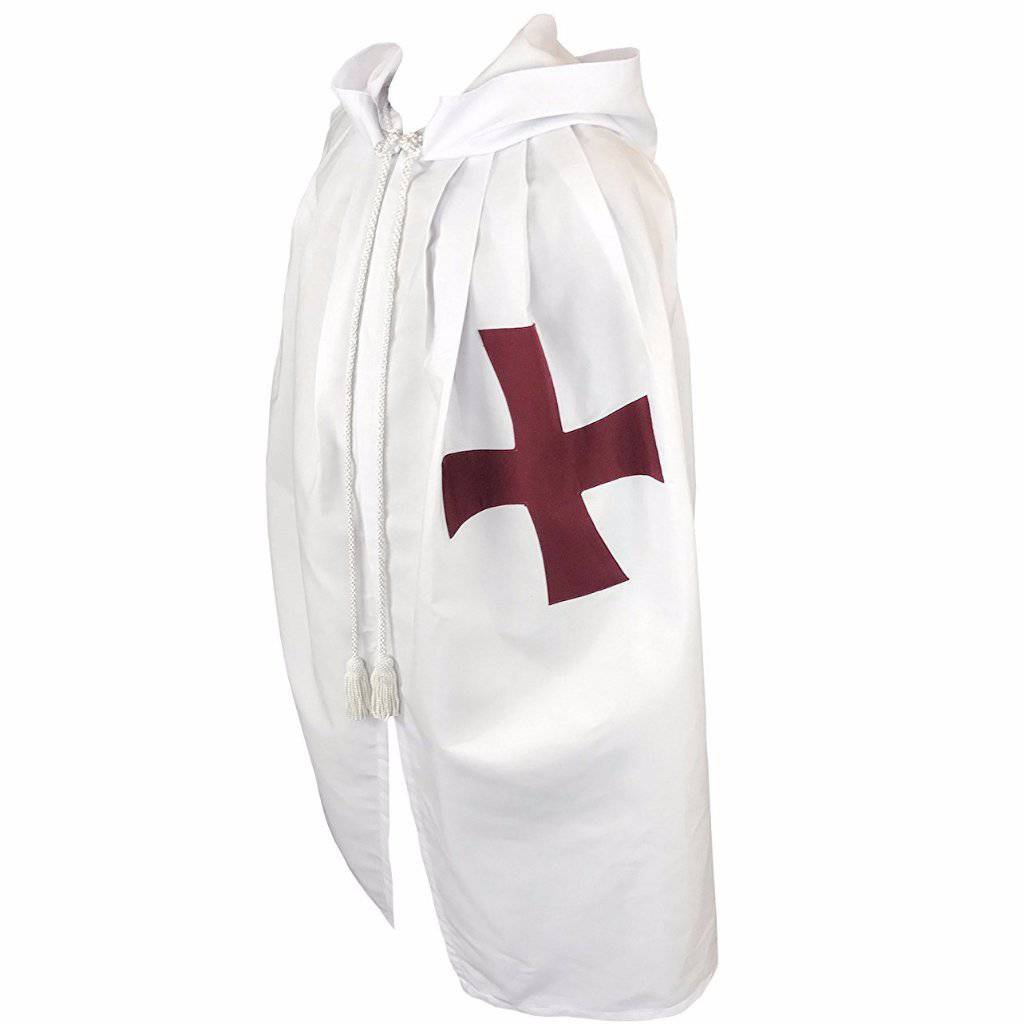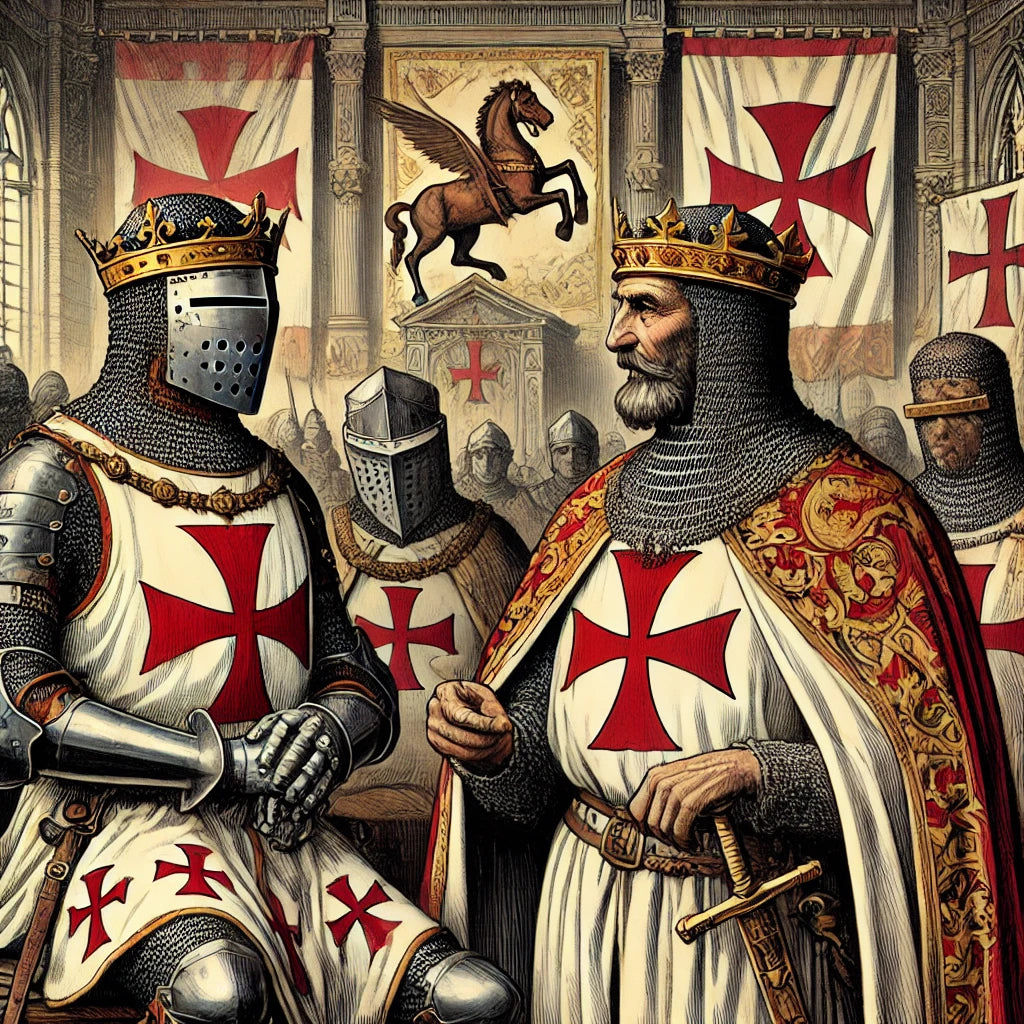The Knights Templar and Rome: A Bond of Power, Faith, and Betrayal
The Knights Templar, renowned for their valor during the Crusades, are best known for their military exploits in the Holy Land. However, their influence extended deeply into the heart of Europe, particularly Rome—the center of Christendom. The complex relationship between the Templars and the Papal States, headquartered in Rome, was one of mutual benefit, cooperation, and eventual betrayal. This bond played a significant role in shaping both the Knights Templar and the medieval Church. In this article, we explore the Templars' rise to power in Rome, their contributions to the Church, and the eventual betrayal that led to their downfall.
The Papal Support and Protection of the Knights Templar
From their inception in 1119, the Knights Templar enjoyed the favor of the Church, particularly from the Pope, who saw the order's potential as both a military and spiritual force. Rome’s support provided the Templars with privileges that would bolster their rise to prominence in the medieval world.
Recognition and Endorsement
The Templars’ official sanctioning came in 1139, when Pope Innocent II issued the pivotal Omne Datum Optimum papal bull. This decree granted the Templars significant autonomy, exempting them from local ecclesiastical oversight and placing them directly under the Pope’s authority. This unique privilege allowed the order to operate independently of local bishops, enabling them to amass wealth, land, and influence across Europe. The Pope's endorsement helped the Templars gain legitimacy and credibility, attracting recruits, funding, and widespread support from the Christian faithful.

Spiritual Guidance
As a religious order, the Templars looked to the Pope for spiritual leadership. Papal decrees legitimized their missions, and the Pope’s guidance provided the foundation for the Templars' religious practices. This spiritual connection also inspired loyalty and devotion among the knights and ensured that their efforts, whether in battle or in service to the Church, were aligned with the Catholic faith.
Protection from Secular Powers
Rome’s support shielded the Templars from the interference of secular rulers, who might have coveted their wealth or questioned their authority. The Pope’s protection allowed the Templars to operate without fear of local political conflicts, enabling them to build a network that spanned across Christendom. However, this favorable status would not last forever, and political tensions would eventually lead to their undoing.
The Templars’ Role in the Papal Curia
The Templars' relationship with the Papacy went beyond spiritual alignment. Their significant role in Rome’s operations extended to finance, diplomacy, and military support. The Templars became indispensable to the Papal States, helping to consolidate the Pope’s power both in Europe and beyond.
Financial Transactions
As Europe’s preeminent bankers, the Knights Templar played a crucial role in managing vast sums of wealth, including the assets of the Papacy itself. They acted as custodians of Church funds, facilitating loans and safeguarding treasures. The Templars’ financial acumen earned them the Pope’s trust and respect, and their expertise in managing large-scale operations was vital to the smooth functioning of the Papal Curia. Their financial dealings contributed to the economic stability of Rome, enabling the Church to continue its influence across Christendom.
Diplomatic Missions
With their far-reaching network across Europe and the Holy Land, the Templars were often called upon to serve as emissaries on diplomatic missions. Their experience in negotiation and logistics made them highly effective in handling sensitive diplomatic issues. They represented the interests of Rome in various international affairs, strengthening the Church’s geopolitical influence and extending its reach.
Military Support
While their primary mission was the defense of the Holy Land, the Knights Templar occasionally provided military support to the Pope, particularly during conflicts with rival secular powers. Their formidable military strength was a valuable asset to the Papal States, especially when Rome’s political and military position was threatened. The Templars’ willingness to support the Pope in military matters showcased their loyalty and their integral role in the broader political landscape of medieval Europe.

The Decline and Fall: Betrayal by the Papacy
Despite their long-standing relationship with the Papacy, the Templars' fortunes took a drastic turn in the early 14th century. What began as a mutually beneficial alliance ultimately ended in betrayal, orchestrated largely by King Philip IV of France, whose greed and political ambitions would lead to the Templars' suppression.
Papal Complicity in the Suppression
In 1307, under the pressure of King Philip IV, Pope Clement V ordered the arrest of Templars across Christendom, accusing them of crimes ranging from heresy to blasphemy. These charges were widely regarded as fabrications designed to justify the seizure of the Templars’ vast wealth. The Pope, whose position was heavily influenced by Philip, complied with the King’s demands. The Templars’ once-protected status evaporated, and they were hunted down, imprisoned, and tortured to extract confessions.
The Papal Investigation and the Dissolution
A formal papal investigation was launched into the charges against the Templars, culminating in a series of trials in which confessions were obtained under duress. Despite evidence suggesting that the charges were baseless, Pope Clement V issued the Vox in excelso bull in 1312, officially dissolving the order. The once-powerful Templars, who had been supported by the Church, were now betrayed by the very institution that had nurtured them. Their wealth was seized, and their members scattered across Europe, marking the tragic end of the Knights Templar.

The Templar Legacy in Rome
While the Knights Templar no longer physically occupied Rome, their influence can still be felt within the city’s medieval history and culture.
Economic and Diplomatic Contributions
The Templars' financial dealings with the Papal Curia contributed to Rome’s economic stability during the Crusades. Their diplomatic efforts also helped solidify the Church’s influence across Europe and the Holy Land, playing a vital role in strengthening Rome’s political and spiritual clout.
Enduring Mystique
Even after the dissolution of the order, the Knights Templar continued to inspire myths and intrigue in Rome. Many of the legends surrounding the Templars persist to this day, from their supposed hidden treasures to their mysterious archives linked to the Vatican. The Templars' connection to Rome remains a powerful symbol of both the Church’s grandeur and the contradictions of medieval politics.
The Complexity of Cooperation and Conflict
The relationship between the Knights Templar and Rome encapsulates the complexities of medieval power, faith, and betrayal. While the Templars rose to prominence under the protection of the Papacy, their eventual betrayal underscores the precarious balance between religious devotion and worldly ambition.
Their story serves as a poignant reminder of the tensions between faith and power, loyalty and betrayal. Today, the Knights Templar remain an enduring symbol of medieval chivalry, the Church’s contradictions, and the ambitions of rulers across Europe.









